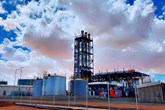Smarter forecasts, safer mines
Published by Jess Watts,
Editorial Assistant
Global Mining Review,
Tailings storage facilities (TSFs) around the world are increasingly vulnerable to extreme rainfall. Overtopping and unplanned discharges are becoming more common as climate volatility intensifies. In 2019, Brazil’s Brumadinho dam collapsed after heavy rainfall contributed to already insatiable conditions at the dam, releasing over 12 million cubic meters of waste and killing 270 people.
More recently, in June 2024, the Chinchorro TSF in central Chile overtopped during a single intense storm that brought about 100 mm of rainfall in the area. While thickened tailings prevented structural failure, the event raised alarms about the growing gap between design expectations and modern storm extremes. Incidents such as these illustrate why better surface water inflow forecasting is now central to safe and continuous mine operations.
Regulatory pressure and the rising bar for water management
In response to high-profile failures, regulators, and industry groups have moved swiftly to update safety standards. The Global Industry Standard on Tailings Management (GISTM), released in 2020, outlines a comprehensive framework that prioritises zero harm and elevates community and environmental safety. GISTM explicitly calls for proactive monitoring and risk-informed decision-making under conditions of uncertainty, including hydrological stress.
National regulators are following suit. Canada’s 2022 update to the Canadian Dam Association’s tailings guidelines now requires operators to account for climate change in hydrologic design and emergency planning. This shift reflects a broader international trend: compliance increasingly means not just stronger engineering, but smarter forecasting.
A changing climate requires an updated approach
These regulatory frameworks acknowledge the need for a new approach to tailings dam management and inflow forecasting. Extreme weather events are not going away, if anything they are becoming more frequent. A UN report warns that extreme precipitation events increase the risk of “unpermitted or otherwise non-compliant discharge of water” due to “weather events exceeding the design capacity of existing tailings storage facilities”.
The challenge comes when these extreme weather events fall outside of the historic record for the mine site location. Traditional hydrologic and surface water runoff forecasting is based on historical data within a catchment. These models start to break down when extreme events bring large volumes of inflows that the model has not been exposed to.
Moreover, traditional models are rarely updated in real time and often lack the resolution, flexibility, and update frequency needed for dynamic operational decisions. In an age where a single storm event can lead to environmental disaster and millions in fines and lost production, this forecasting gap is both a liability and a missed opportunity.
The Role of AI-driven forecasting
To address this growing risk, AI-driven inflow models are offering a more adaptable alternative. These systems can incorporate far more data, update continuously, and recognise patterns beyond a single location’s climate history.
Upstream Tech’s HydroForecast, for example, is a hydrology-informed AI model built to predict surface runoff and inflows with high spatial and temporal resolution. Unlike conventional models, HydroForecast is trained on data from approximately 500 basins with varying hydrologies and catchment areas, using multiple meteorological re-forecasts and satellite observations to improve accuracy. This broad training allows it to understand the physical relationships driving inflows and perform well even in regions or conditions that have not occurred before at a specific site - an increasingly valuable feature in a warming world.
For global mining operations, this capability allows teams to shift from reactive decision-making to proactive planning, enabling earlier discharges, safer emergency preparedness, and sustained compliance with increasingly stringent water management regulations.
Moving from reactive to resilient
Extreme inflows to TSFs are no longer rare anomalies – they are becoming routine occurrences across continents. As the mining industry is held to higher environmental and operational standards, accurate and forward-looking inflow forecasting is rapidly becoming essential.
By integrating advanced forecasting technologies like HydroForecast, global mine operators can gain a critical edge: dynamic risk visibility. These tools serve as early warning systems, enabling teams to anticipate high runoff, avoid emergency discharges, and maintain safe operations during extreme weather.
In an era of intensifying climate volatility, resilient water management is not just about compliance – it is about protecting people, the environment, and long-term business continuity. Better forecasting, supported by AI and real-time data, is the key to meeting this global challenge head-on.
Read the article online at: https://www.globalminingreview.com/special-reports/05062025/smarter-forecasts-safer-mines/
You might also like
Renewal of Wärtsilä’s operation and maintenance agreement ensures continued production reliability for Mauritanian gold mine
Technology group Wärtsilä has renewed its operation & maintenance agreement with Tasiast Mauritanie Limited S.A., a subsidiary of the Canadian group Kinross Gold Corporation for another three years.

